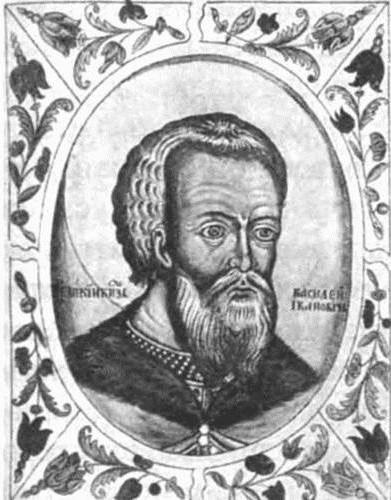Dmitry Gerasimov is a writer and Russian scribe, scientist and theologian who lived at the turn of the second half of the 15th and first half of the 16th centuries (somewhere around 1465 - 1535). According to European chronicles and Russian chronicles, he is known as Dmitry Tolmach, Ambassador Dmitry, Mitya Maly, Demetrius Erasmiy, Dmitry Scholastic. There are suggestions that Gerasimov is a family nickname or middle name. Gerasimov Dmitry Dmitrievich (although his middle name is not known exactly), quite possibly, received such a nickname by the name of his brother the scribe-monk, who was older, and his name was Gerasim Popovka. But these are just guesses. The talented Dmitry very soon became famous, he became an intermediary between the culture of Renaissance Europe and Moscow Russia.
Russian Ambassador Dmitry Gerasimov
His birthplace is not exactly known, but most likely he was from Novgorod, as he had close ties with the department, and the beginning of his brother Gerasim Popovka’s career was also connected with this place.
At one time Dmitry Gerasimov lived in Livonia and therefore knew Latin and German very well. He was one of the first Russians to study in a Western European school.
Dmitry was a member of the closest circle and even lived in the house of the Novgorod ruler Gennady Gonzov, under whom his brother served as hierodeacon. All of them gathered in the house of the archbishop with the goal of creating and disseminating polemic and church literature in Russia. Gerasimov took an active part in the struggle of the lord with heretics.
In 1489, for the Kirillo-Belozersky monastery, he begins to rewrite the creations of St. Athanasius the Great. Around 1499, Gerasimov accompanied St. Gennady on a trip to Pskov, where there was a tough discussion about the icon, which depicted King David with a crucified seraph in the image of Christ.
White hood
Some curious readers may be interested in the tales of Dmitry Gerasimov, but he did not write them, but there was a magnificent religious work with mystical implication, “The Tale of the White Cowl” (1490 or 95). There they talked about the miraculous appearance of the Byzantine "white hood" - a symbol of the highest church authority, which passed from the devastated Byzantium to the city of true faith - Novgorod. This work was truly another medieval masterpiece. The Novgorod Church thus voiced its claim to the main place among all Orthodox dioceses. However, the authorship of Gerasimov may be disputed by historians.
In 1499, Gerasimov participated in a landmark event - the creation of the first Slavic Bible, called Gennadievskaya.
For two decades, the beginning of the 16th century, Dmitry served as a interpreter (in modern terms, as a translator) in Moscow at the Embassy Court and, together with Vasily III, participated in embassies in Denmark, Sweden, Norway, Prussia and the Holy Roman Empire. Between missions, Dmitry Gerasimov was engaged in translation and book activities.

At the very beginning of April 1525, Tsar Vasily III sent a messenger and Gerasimov with a letter to Pope Clement VII, the document contained a response to the Pope’s Embassy and the desire to participate Muscovy in the League against Muslims. Dmitry was honored in the papal court, he visited the Roman Senate and examined the sights of the city. Around the same time, a portrait of Vasily III became popular in Europe, most likely, he presented it to Pope Gerasimov as a gift. Dmitry Gerasimov then returned to Moscow on July 20, 1526, together with the European ambassador. After visiting Rome, Gerasimov was already 60 years old, and he was completely immersed in book works.
Translations
The repressions that affected Maxim the Greek in 1525, with which the scientist worked very closely, did not affect him.
Their cooperation was peculiar, the Greek, who came from Athos, did not know the Russian language, and Greek Gerasimov, so Latin became their common language of understanding. Maxim translated Greek texts into Latin, and Dmitry from Latin into Church Slavonic.
The date of Gerasimov’s death is unknown, the last evidence of him is the translation of the Bruno of Würzburg arch made by Dmitry in 1535 or 1536.
In general, it was the scientist’s translation activity that began around 1500. Then Dmitry, together with the Russian diplomat Vlas Ignatov, with whom he worked for many years in the Ambassadorial court, translated psalms from German for Archbishop Gennady. Other historians suggest that Gerasimov and Ignatov were translating from Latin the interpretation of Jerome in the Gennady Bible of 1499.
Map
Dmitry Gerasimov also translated from Latin a treatise directed against Judaism against Nicholas de Lira (1501). There was another similar treatise written by Samuel Evrein (1504), translated either by Gerasimov or Nikolai Boulev.
The study of geography has also always been in Dmitry’s circle of interests. He was even called "Russian Columbus." It was he who brought to Rome his own map of Russia, compiled by him according to polls and descriptions. For the Italian cartographer Batista Aneza, it became the source for creating the first map of the Russian state or the map of Muscovy, which he published in 1525.
The name of Dmitry Gerasimov today should be known to every cultural and educated person. He communicated on equal terms with the most prominent people of the European Renaissance and offered them his most daring ideas.